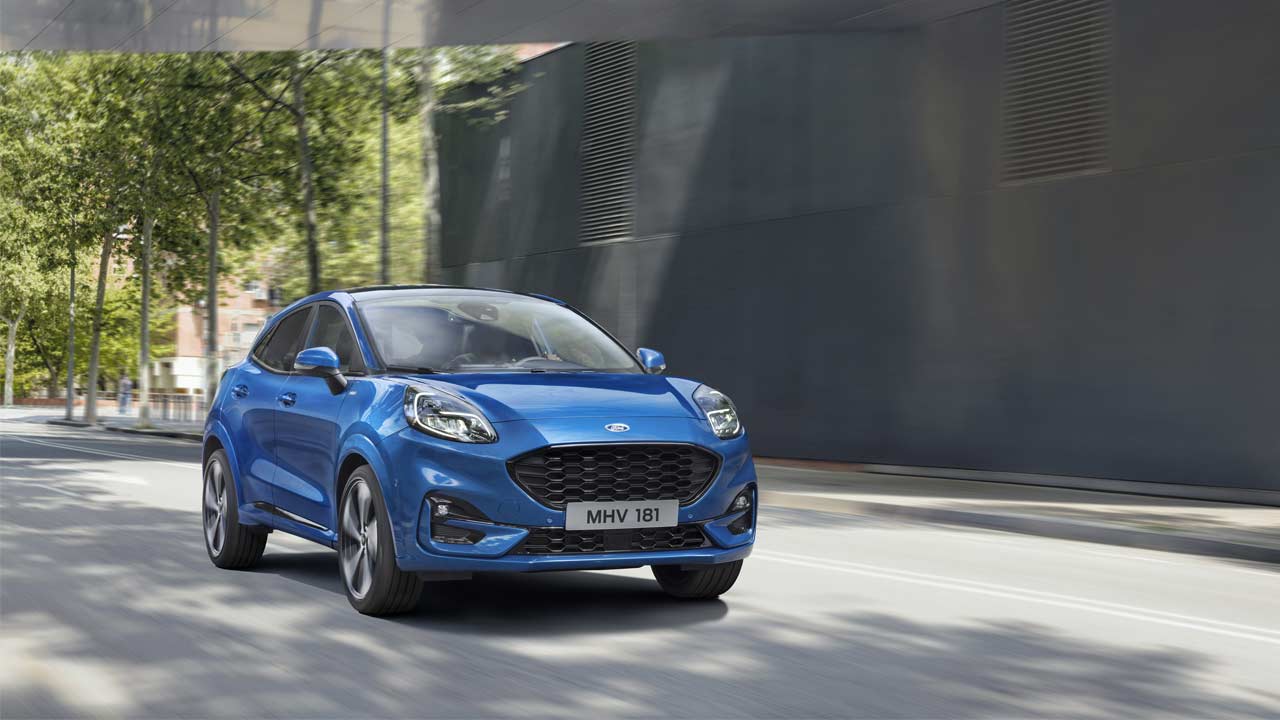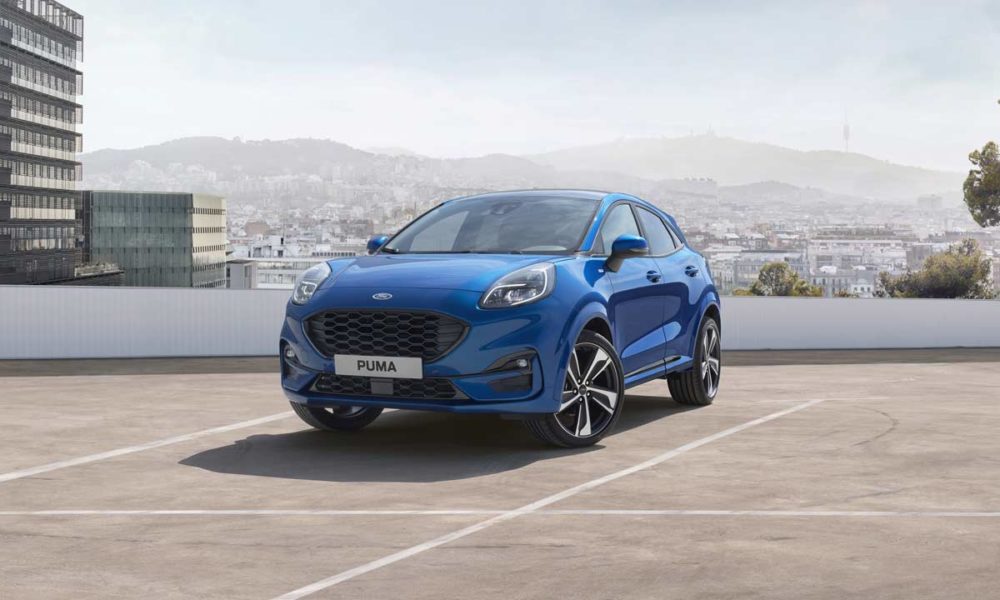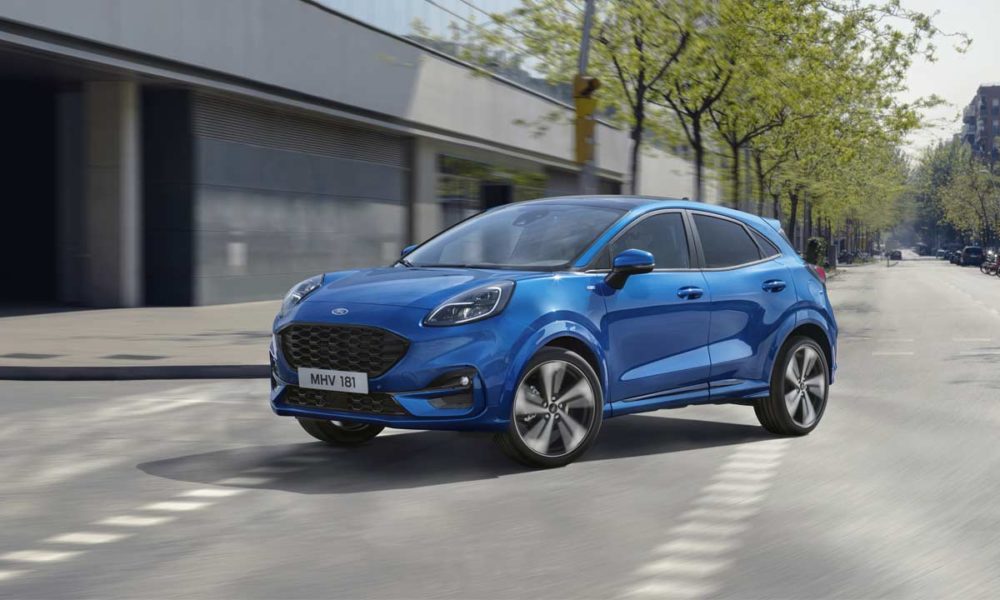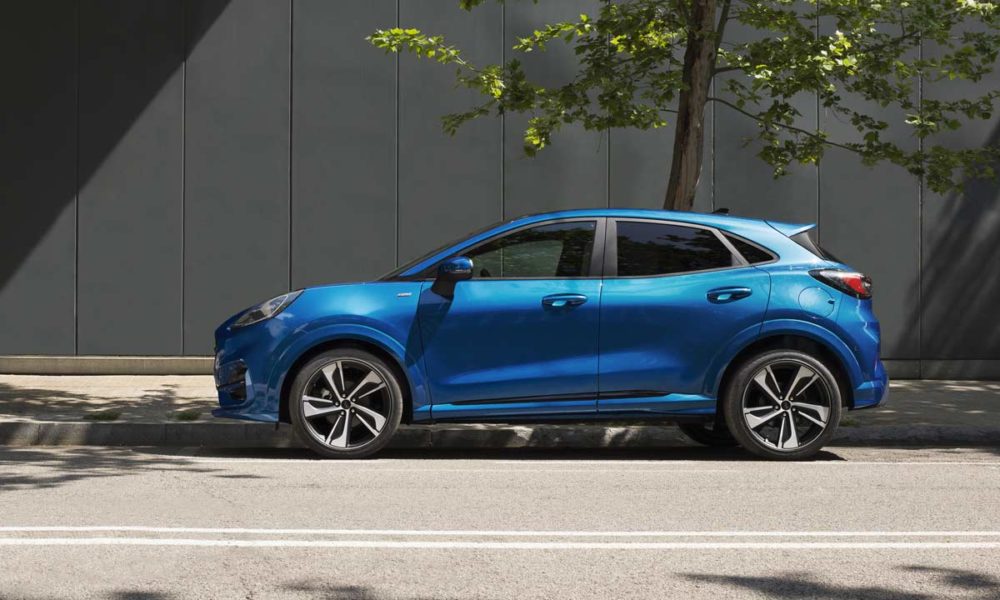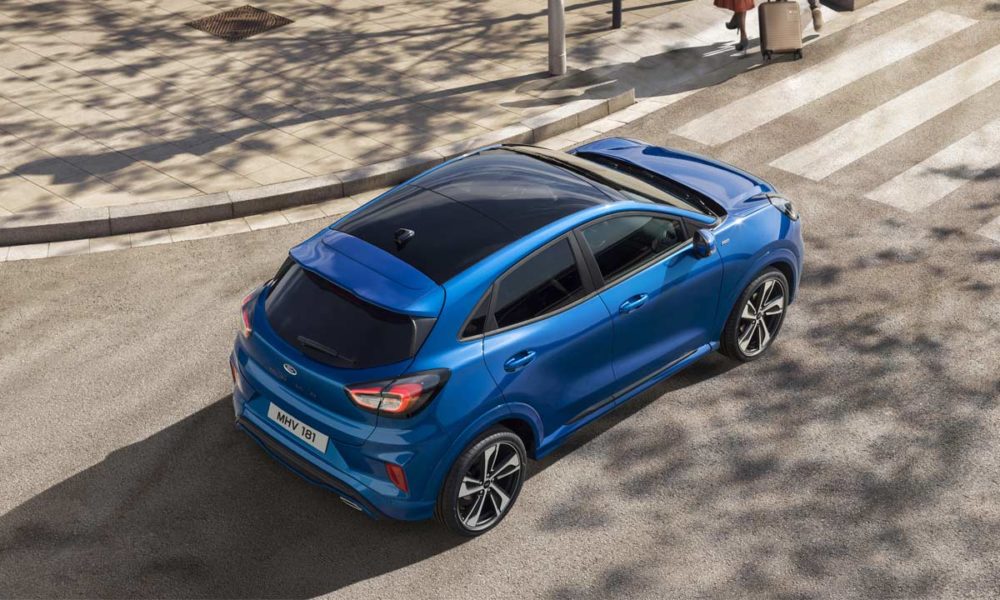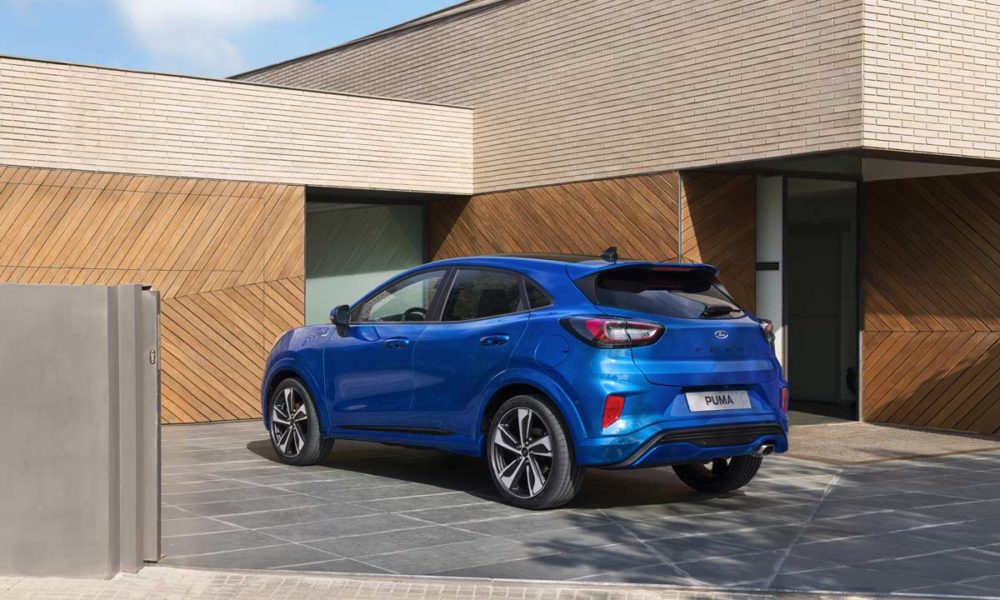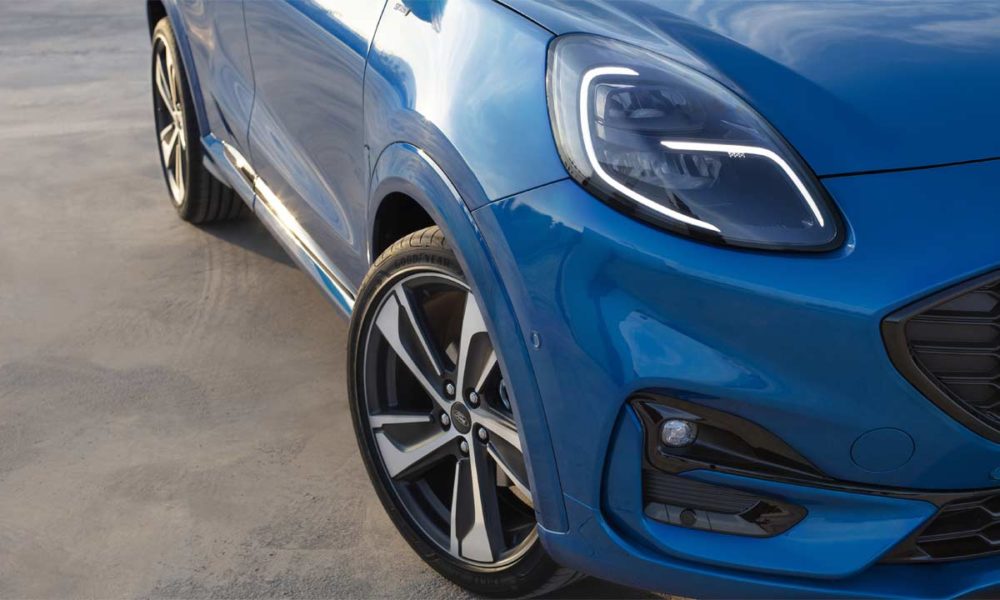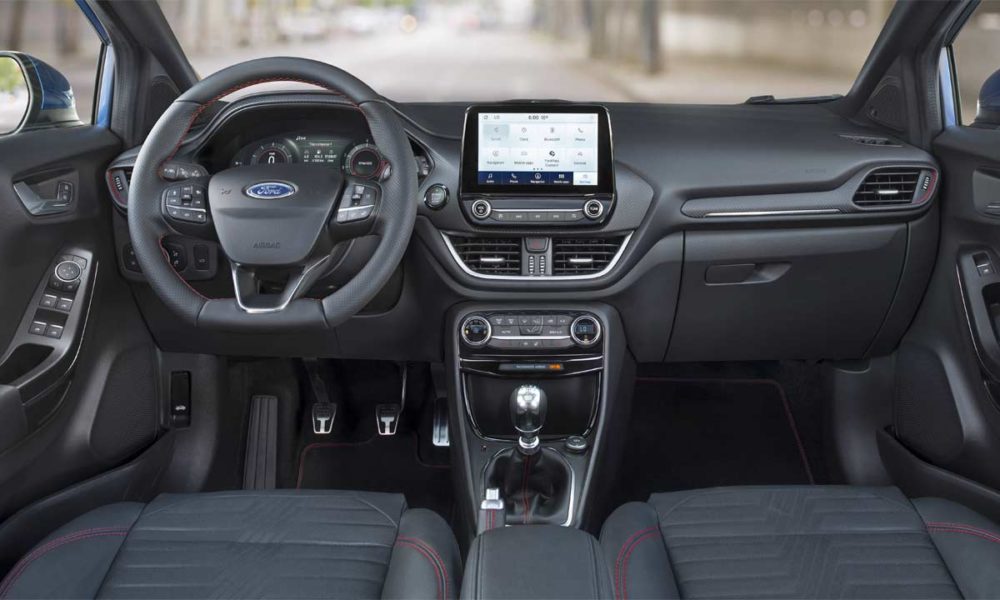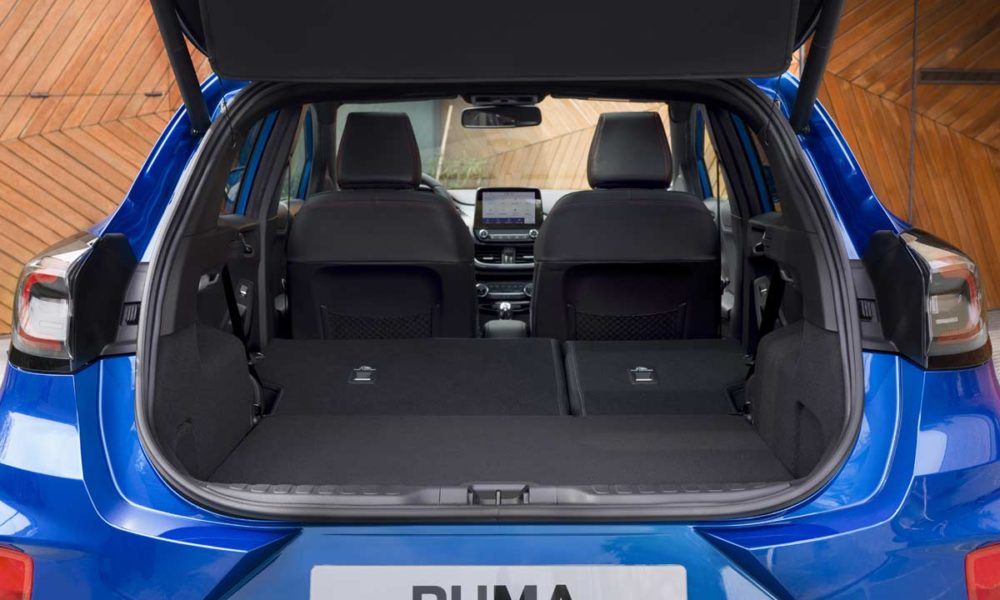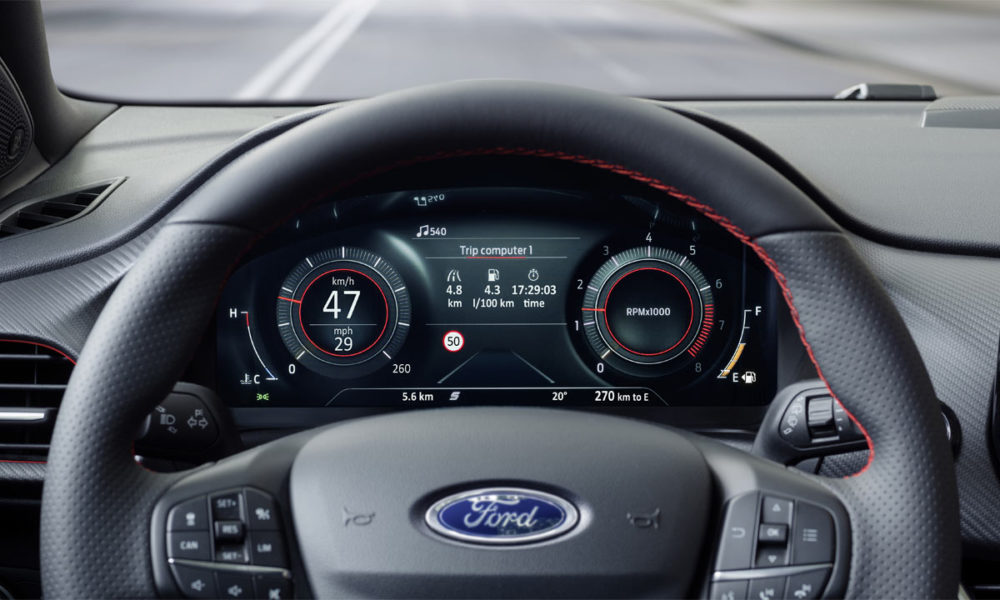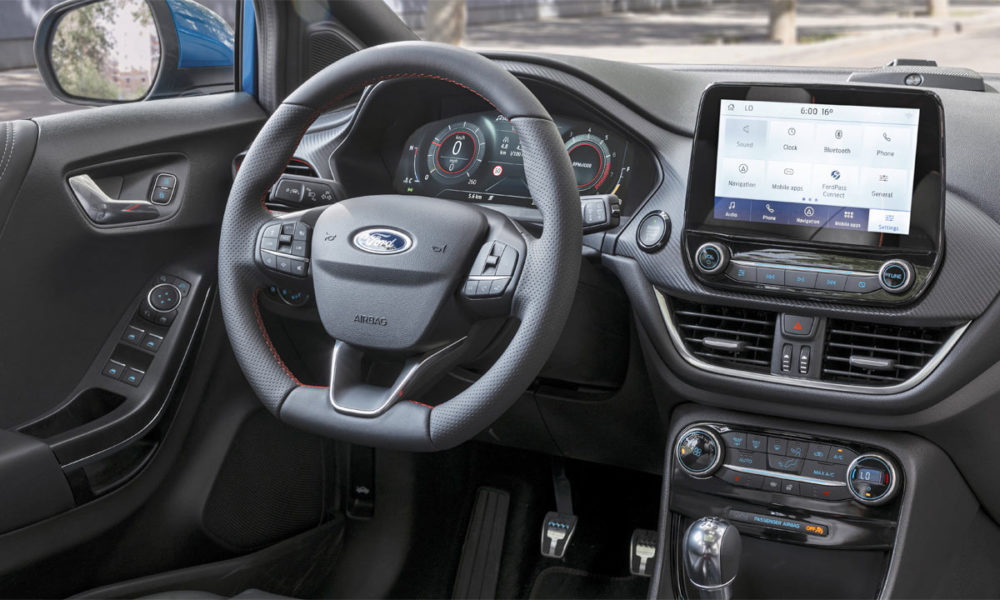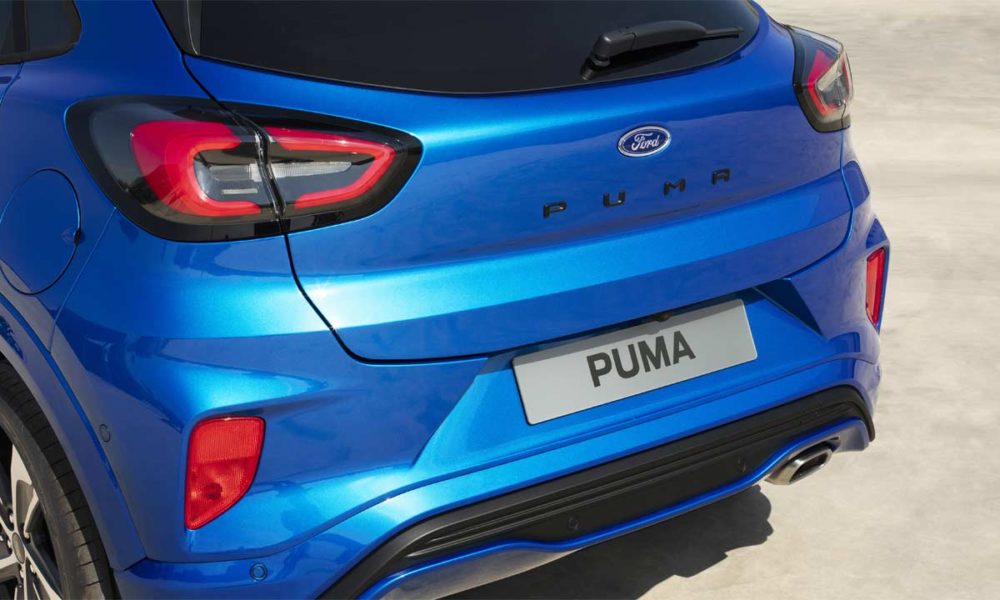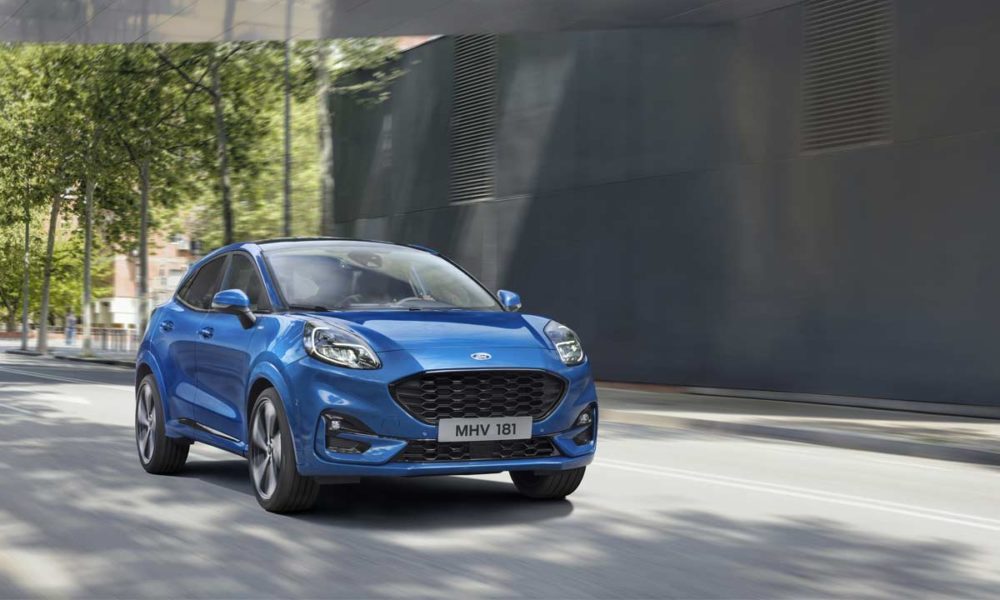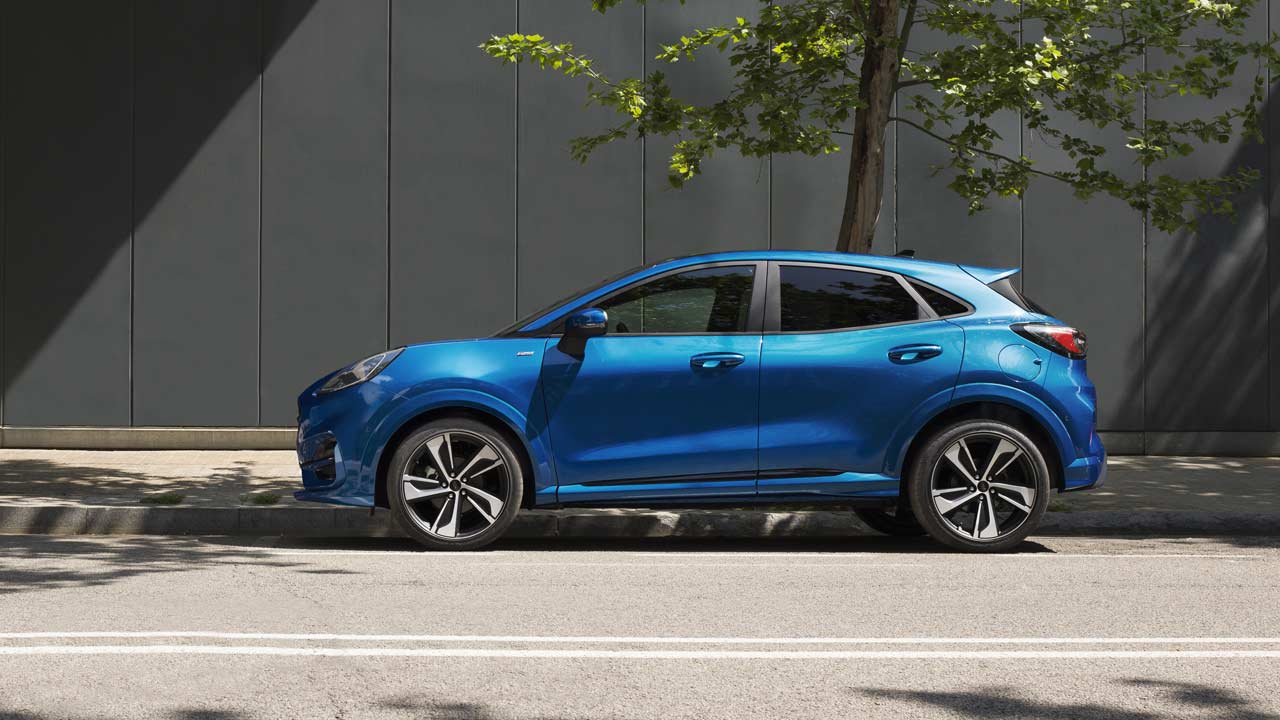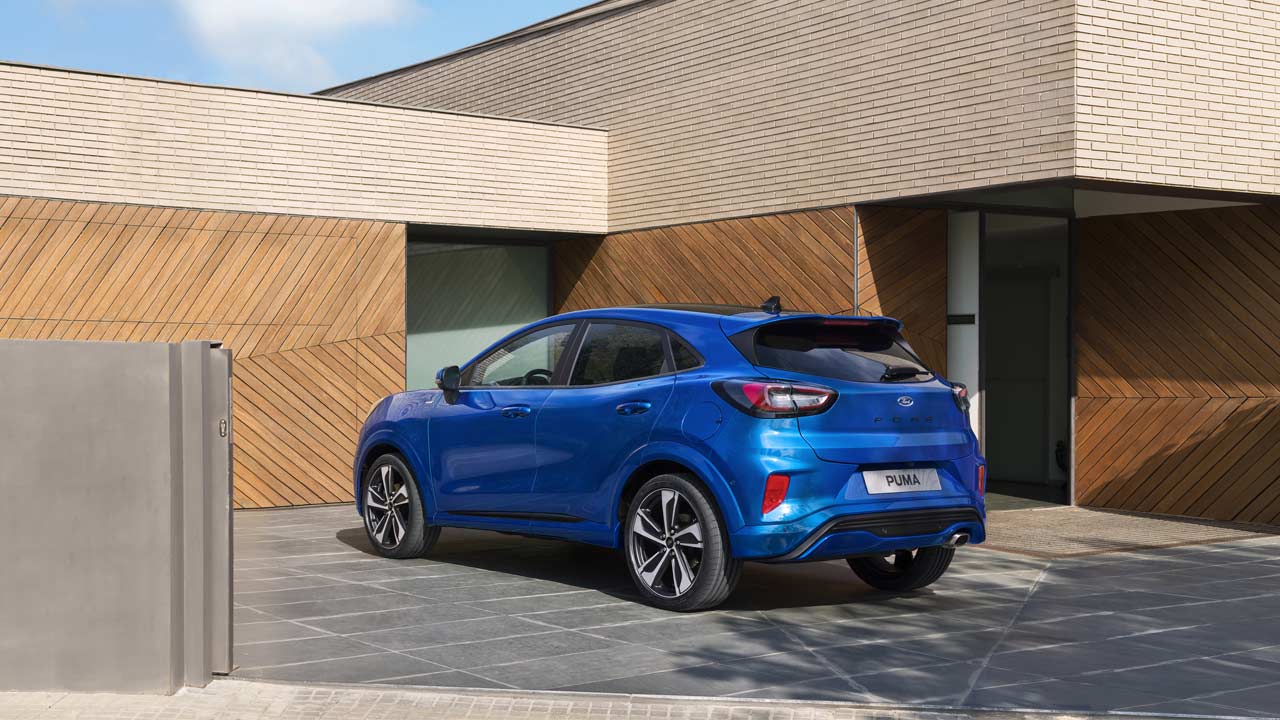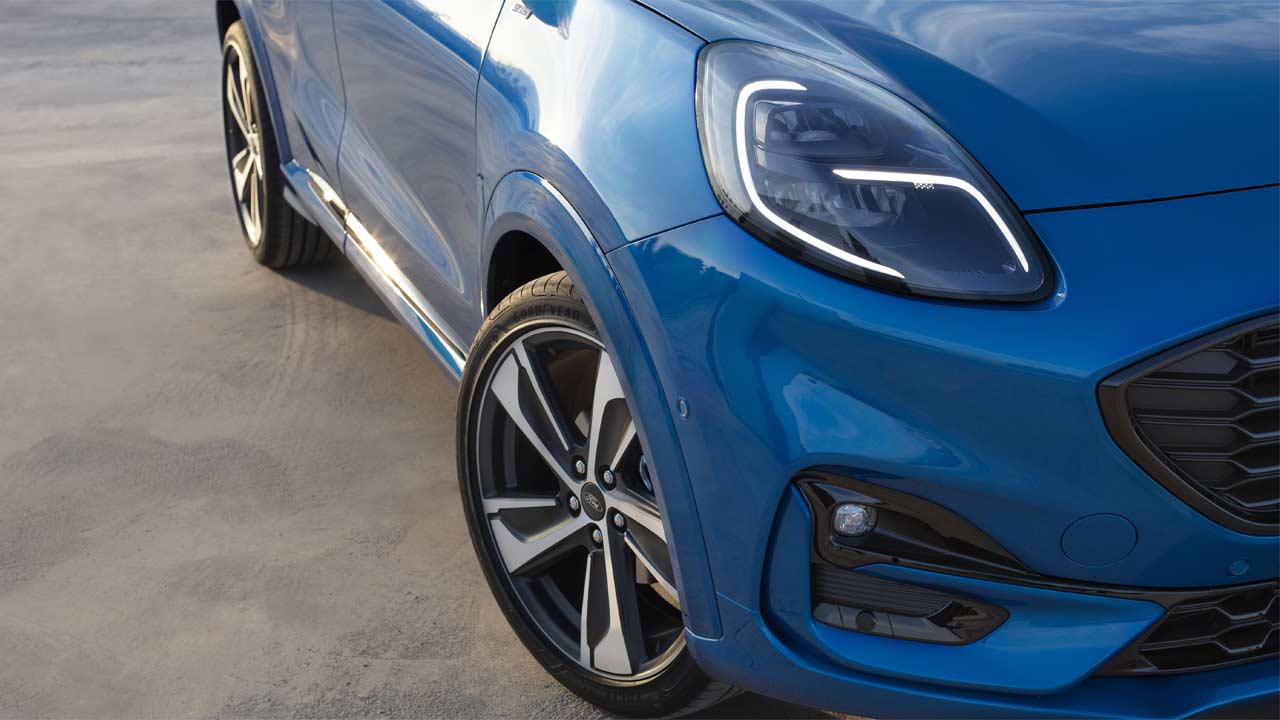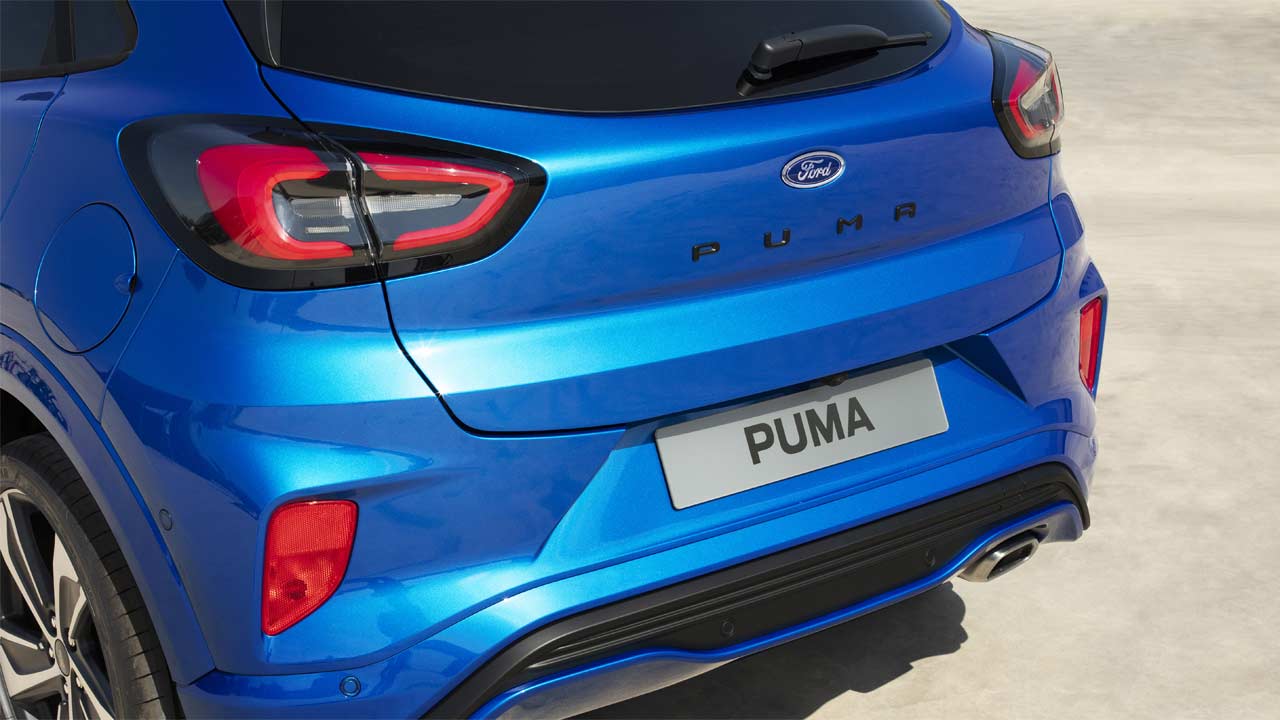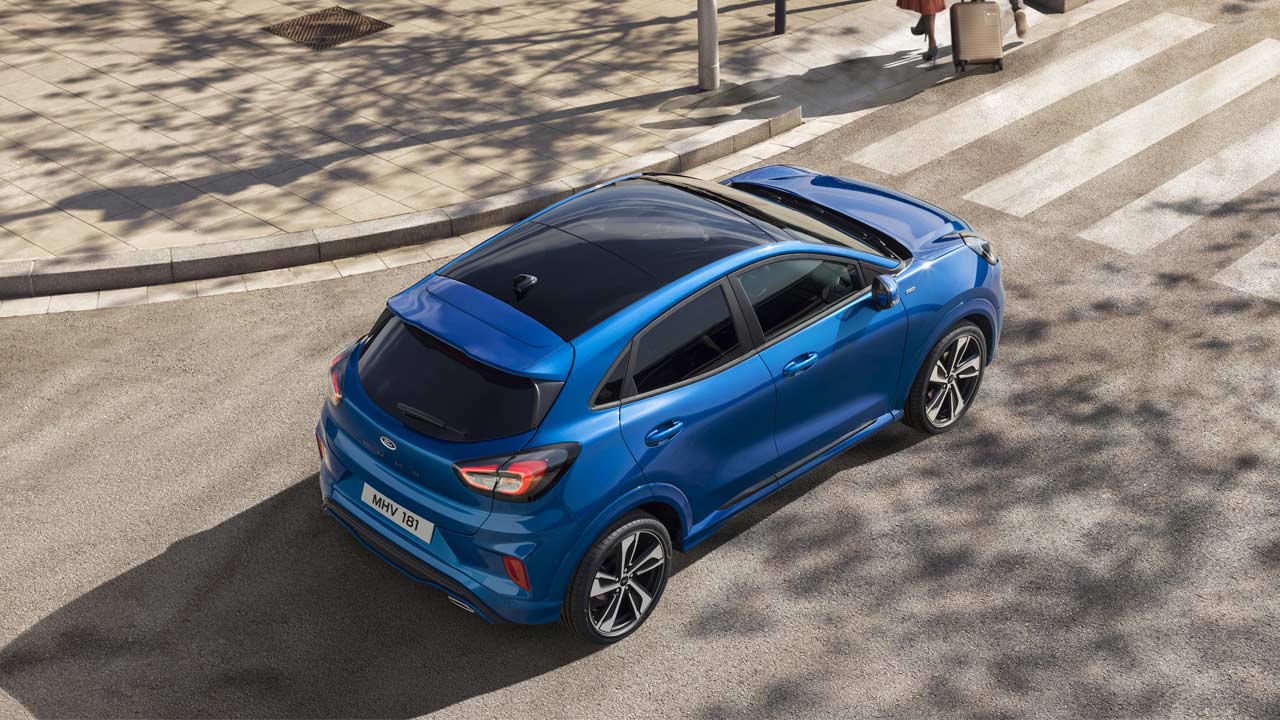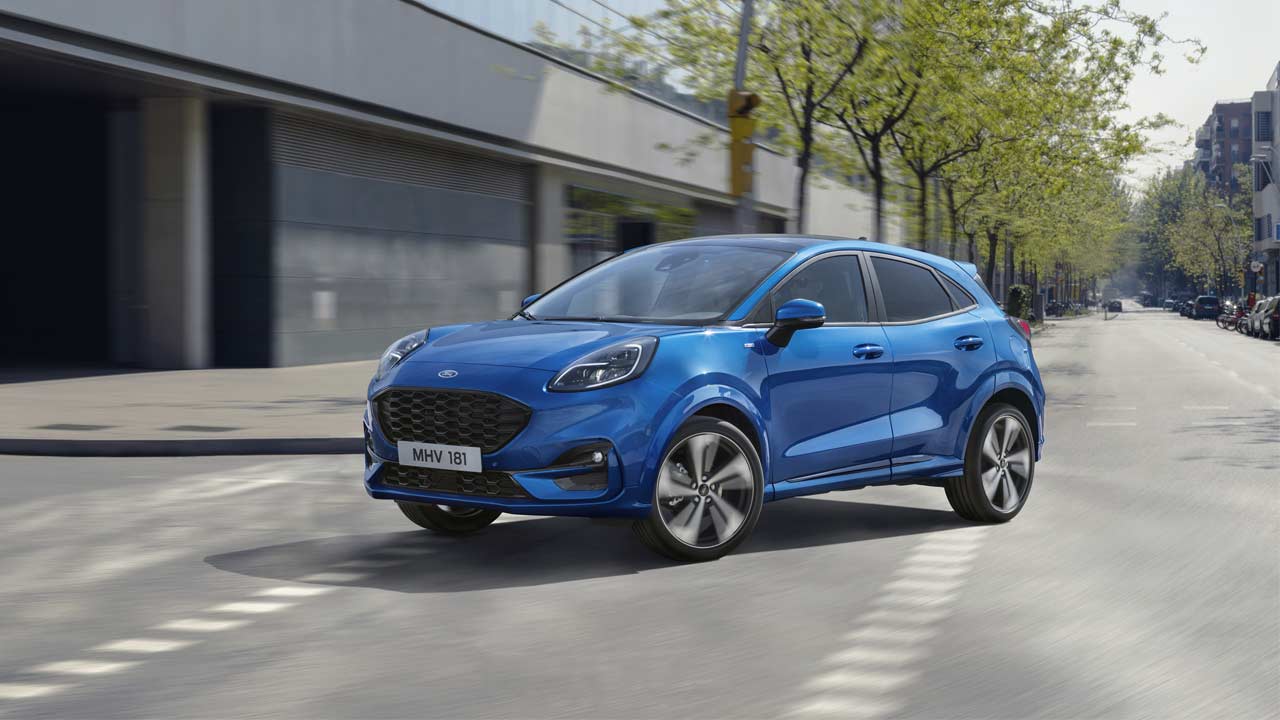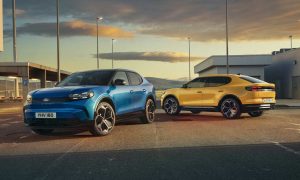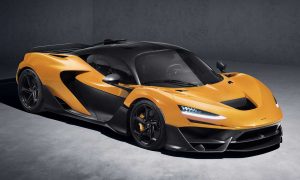The ever-growing compact crossover segment has a new entrant called the Ford Puma. As some of you might know, Ford had previously used the Puma nameplate for a sporty coupe in the ’90s.
Ford doesn’t call the new Puma as an SUV, but an “SUV-inspired compact crossover” that is stylish, sporty and seductive. Just one look at the vehicle and most of us would agree that the Puma has all three of ’em. Design features include “canoe-shaped” headlamps that sit high on the wings, a black insert that creates floating A-pillar effect, and a low, sloping roofline. The ST-Line features grille with matt black elements and a high-gloss surround, high-gloss foglamp surrounds, and an optional roof spoiler which apparently is functional too.
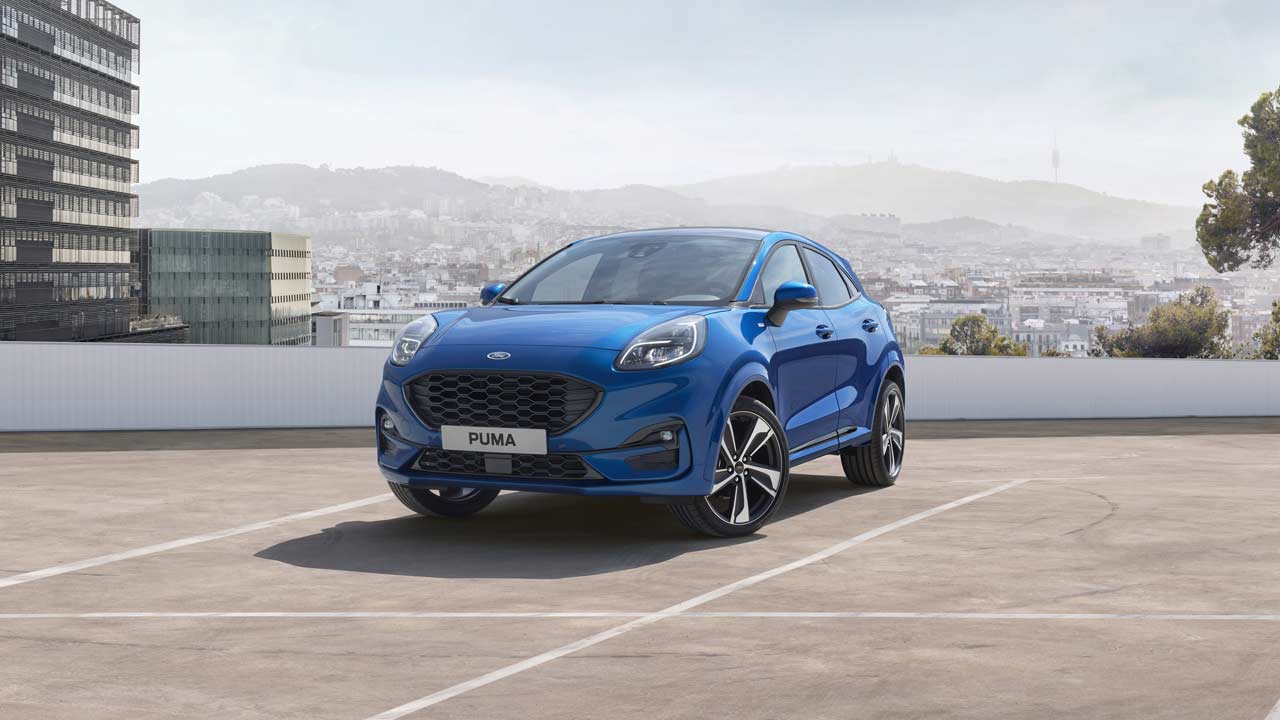
The Ford Performance-inspired Puma ST-Line is offered with 18-inch standard or 19-inch optional matt black machined alloy wheels. Puma Titanium features Pearl Grey machined 18-inch alloy wheels, and chrome elements for the grille, side skirts, and fog lamps. The rear diffuser and skid plate are finished in metallic grey, and the window surrounds in high gloss black. In some angles, the Puma might remind you of the E-Pace.
A palette of 10 exterior colours includes Blazer Blue, Frozen White, Race Red, Solar Silver, Agate Black, Lucid Red, Grey Matter, Desert Island Blue, Magnetic and Metropolis White.
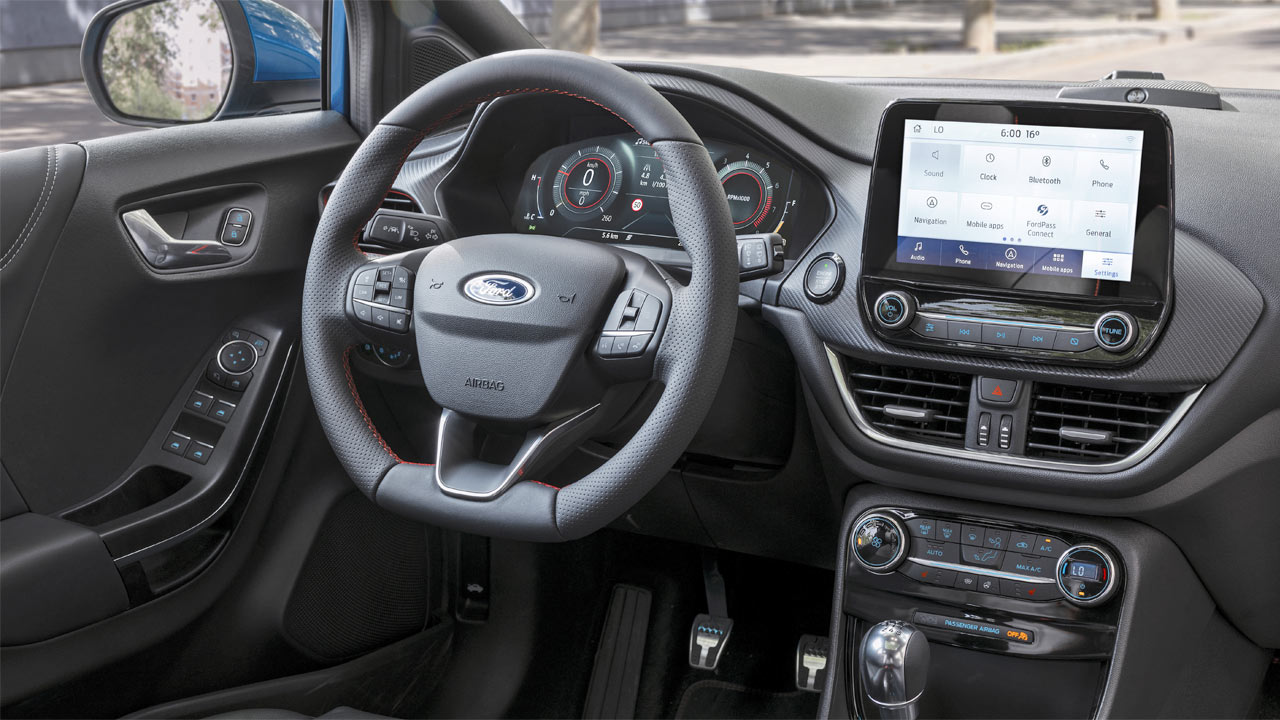
The interior layout is equally seductive as well with the usage of premium-looking materials and textures. The ST‑Line features a flat-bottomed steering wheel and signature red stitching – also available on the optional partial leather seats. Alloy pedals, aluminium gear shifter and black headliner further add to the sporty character.
Features include a 12.3-inch configurable digital instrument cluster, 8-inch central touchscreen with SYNC 3, swipe gestures, Apple CarPlay & Android Auto compatibility, wireless charging, FordPass Connect on-board modem with WiFi connectivity for up to 10 devices, height adjustable driver’s seat, lumbar massage for front seats, full-length openable panoramic glass roof, and 575-watt 10-speaker sound system. Options list includes B&O Sound System.
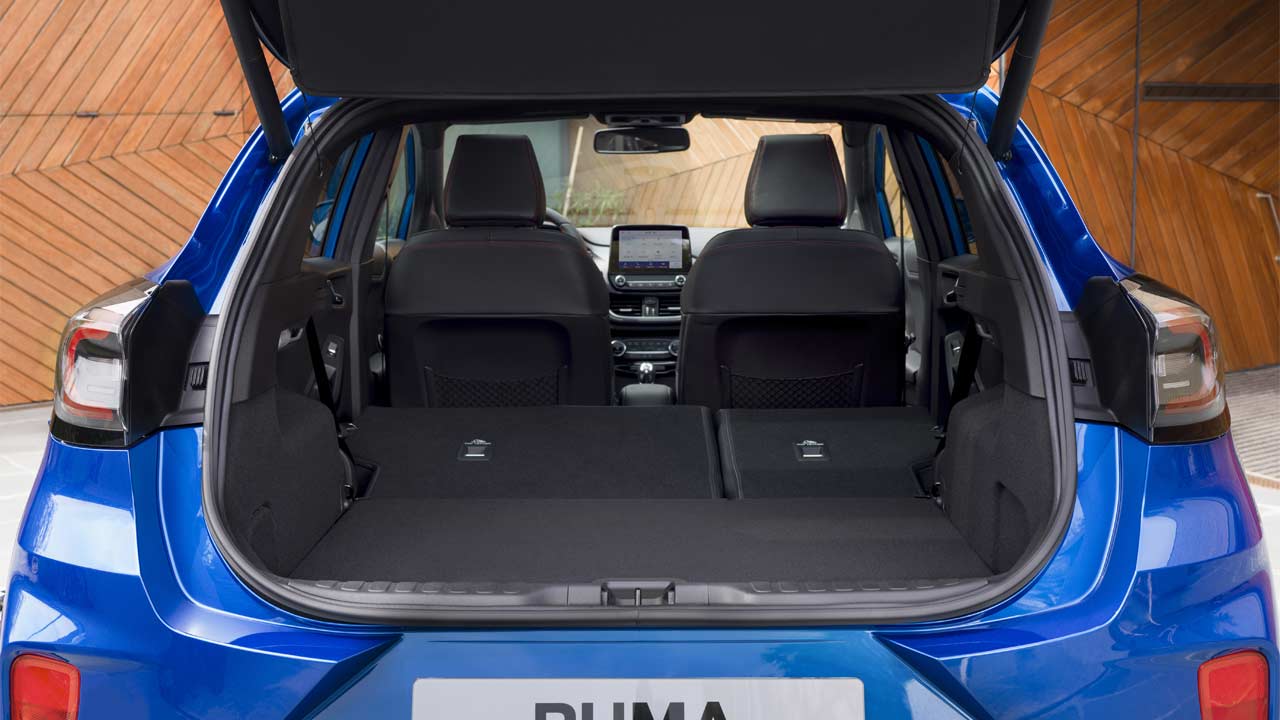
As for cargo capacity, the Puma offers 456 litres which is claimed to be the best-in-class. Also claimed to be the segment-first is the hands-free tailgate technology where the gate opens with a kicking motion under the rear bumper.
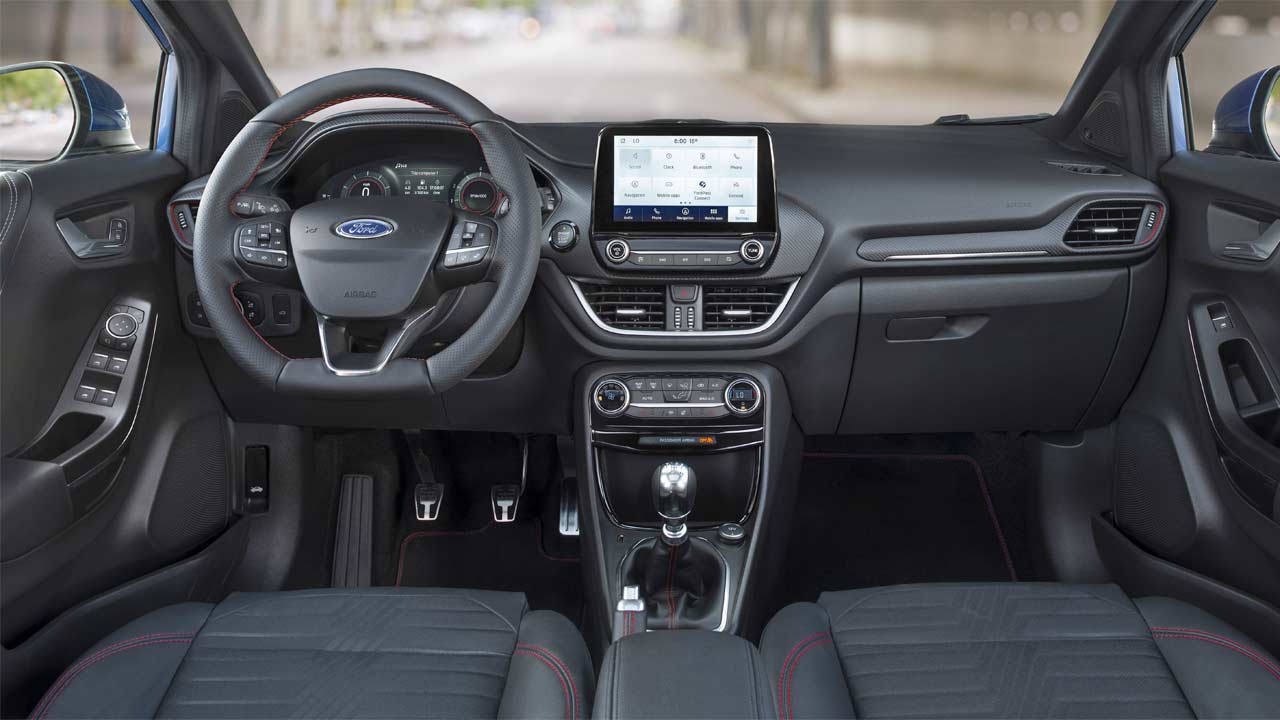
Safety and assistance features include a suite of Ford Co-Pilot360 technologies that utilize 12 ultrasonic sensors, three radars and two cameras positioned around the car. The Puma features Adaptive Cruise Control with Stop & Go, Speed Sign Recognition, Lane Centring, Lane-Keeping System, Blind Spot Information System (BLIS), Cross Traffic Alert, Road Edge Detection, Pre-Collision Assist with Pedestrian Detection, Post-Collision Braking technology (to reduce the impact of a potential secondary collision), Evasive Steering Assist, and Active Park Assist with Perpendicular Parking as well.
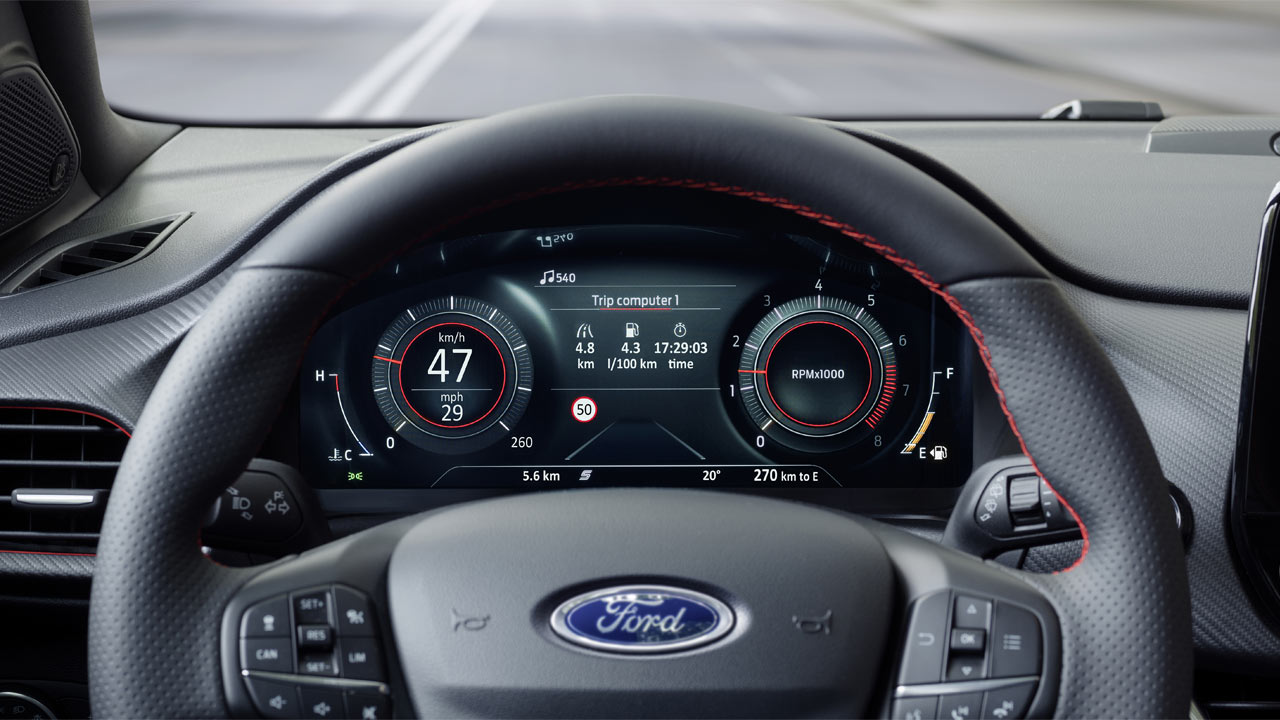
Powering the new Ford Puma is a 1.0-litre EcoBoost (turbocharged) 3-cylinder petrol engine that comes in 125 hp and 155 hp tunes. There’s also a 11.5 kW belt-driven integrated starter/generator (BISG) for mild-hybrid functionalities such as torque assist and energy recuperation. It provides up to 50 Nm (37 lb-ft) of torque – reducing the amount of work required from the petrol engine for a fuel efficiency improvement of up to 9%, based on WLTP analysis, Ford said.
Puma’s 1.0-litre EcoBoost and EcoBoost Hybrid powertrains also feature cylinder deactivation system – claimed to be industry-first for a 3-cylinder engine, which automatically switches off one the engine’s cylinders when full capacity is not needed, such as when coasting or cruising. The system can disengage or re-engage one cylinder in 14 milliseconds.
A “slick-shifting” 6-speed manual transmission sends power to the front wheels. A 1.5L diesel powertrain option and a 7-speed dual-clutch automatic transmission will join the lineup after launch. No word on AWD variant just yet.
Built on Ford’s B-car architecture, the Puma features stiffer twist-beam rear suspension, larger shock absorbers, stiffer suspension bushes and optimised suspension top mounts that are claimed to reduce friction and enhance stiffness throughout the chassis to support best-in-class driving dynamics. The ST-Line gets a sports suspension with specially tuned springs.
Ford Puma will go on sale at the end of the year, and will be produced at Ford’s Craiova Assembly Plant, Romania.
Also read: Ford Puma scores 5 stars in Euro NCAP crash tests

Leave a Reply
Note: Comments that are unrelated to the post above get automatically filtered into the trash bin.
